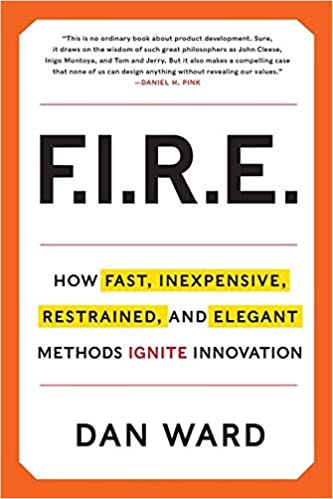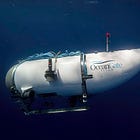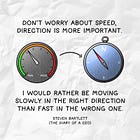Welcome to Polymathic Being, a place to explore counterintuitive insights across multiple domains. These essays take common topics and explore them from different perspectives and disciplines and, in doing so, come up with unique insights and solutions. Fundamentally, a Polymath is a type of thinker who spans diverse specialties and weaves together insights that the domain experts often don’t see.
Today's topic is Part Eight in the Keys to Innovation series and introduces a method to achieve innovation without losing ourselves to the chaotic space of ideation. Join us and explore a framework that embraces constraints to drive innovation, not restrict it.
Intro
One of the hardest parts of innovation is managing its scope. Too often, it either augurs into a proof of concept that never scales or is so broad that it can never reduce the problems. Adding to this challenge is that many view constraints as limiting innovation. The demand for more time, money, and complexity sounds like a way to achieve better innovation, but reality proves otherwise.
I’ve faced this problem across commercial and defense companies on everything from small R&D projects to massive strategic investments. I also deal with it daily as I support the Space Force in improving its digital ecosystems. These are large systems of systems problems, and the way to reduce them is to embrace their natural constraints.
This is where Dan Ward, a former U.S. Air Force Officer with 20 years of engineering experience developing advanced technologies, has some great insights. He wrote the book F.I.R.E: How Fast, Inexpensive, Restrained, and Elegant Methods Ignite Innovation. Let’s take a look at each element of that acronym and find new ways to unlock innovation without getting burned.
F.I.R.E.
Dan’s book offers four valuable constraints for managing research projects. These constraints help balance the team's scope and execution: Fast, Inexpensive, Restrained, and Elegant. Let’s examine each one.
Fast: Prioritize speed by breaking projects into smaller, manageable tasks with clear, short-term deadlines. This approach maintains momentum and ensures timely delivery without compromising quality.
Inexpensive: Operate within a modest budget, encouraging efficiency and resourcefulness. Solving problems with intellectual capital rather than financial capital leads to more innovative solutions.
Restrained: Exercise self-control by setting clear objectives and avoiding unnecessary features or complexities. This restraint keeps projects focused, reduces risks, and prevents scope creep.
Elegant: Strive for simplicity in design and execution. Elegant solutions are user-friendly, efficient, and effective, often outperforming more complicated alternatives.
These seem easy at first blush, but each has been bastardized by Silicon Valley mantras that drive the wrong behavior. Let’s dive into each one to highlight the nuances to avoid the ‘easy' interpretation.
Fast
Inevitably, when people hear “Fast,” they think: “Move fast and break stuff.” However, that’s not at all what is meant by fast here. Counterintuitively, this sort of fast means actually taking time at the start to do a proper problem definition and systems decomposition. Fast here is embracing the quote attributed to Einstein:
“If I had an hour to save the world, I would spend 55 minutes defining the problem, and 5 minutes coming up with solutions”
Or, as we say in the Army Rangers:
Take a look at that summary of fast again: “Prioritize speed by breaking projects into smaller, manageable tasks with clear, short-term deadlines.” This isn’t just speed. This is disciplined execution that allows you to move quickly by properly understanding the complexities and relationships of the systems.
In this sense, going fast means slowing down, stepping back, and deeply understanding the problem. It’s also one of the first things I see well-intentioned people who are trying to innovate skip, typically to their failure. With proper contextualization of the problem, we can now examine the budget.
Inexpensive
Once we’ve defined and decomposed our problem properly, we need to fund a solution. Inexpensive in this context doesn’t mean cheap. I’ve seen crucial research fail not because of the complexity but because the funding was too limited to crack through the complexity. While Dan Ward points out the bloated budgets affecting innovation, over-indexing to investing pennies is equally as foolish.
A great example was an innovation idea I put together at a previous company. I needed to do some more research and, more importantly, collaborate with a few other teams across the company. I was allotted only $1000 dollars to investigate based on the idea that the constraint would improve creativity. For context, that’s about 5 hours of labor. Considering I needed to talk to 10 people, that was 1/2 hr for each conversation if I volunteered my own time. Subsequently, it didn’t get the traction I needed, and the innovation sat unrealized for lack of funding.
Inexpensive is the balance of the two extremes. It’s a valuable constraint that can force people to rethink their approach to the problem. It can also help set expectations for the next element of restraint.
Restrained
Personally, I feel this element is redundant. It does make a nice acronym, but fast and inexpensive requires restraint to define and bracket the problem space and to define a proper budget. This element often gets bastardized to mean augering into a problem and focusing on a tiny element at the expense of the larger system.
I’m not going to go deeper into this one except to emphasize that restraint is the name of the game for F.I.R.E. What I mean by that is that we have to restrain ourselves from indexing too far one way or the other. In that sense, it might be one of the harder elements since most people tip to the extremes. That restraint is also essential to elegance.
Elegant
KISS - Keep It Simple Stupid. If you haven’t done the work under the first step, Fast, you’ll never be able to achieve elegance in this step. It really is a pairing between Fast and Inexpensive, and those two constraints allow you to really consider the simple yet elegant solutions. It also helps you understand why Systems Engineering is “The science of good enough.”
Elegance isn’t perfection. In fact, it might not even be pretty. Elegance also isn’t sophistication; it’s simplicity and alignment to the true value the customer or end-user needs. For example, when I was working on auxiliary power control systems at Honeywell, our design was complex, and the more features we promoted, the more features the customers thought they wanted. However, when we talked to the pilots, we found that what they really cared about was that it started when needed, ran without issue, and didn’t distract them.
A co-worker came up with an analog electronic design with a mean time between failure of over 10,000 hours with a simple push button start/stop that had a backlight that lets you know it was running or whether there was an issue. Compare that to the digital design we had with a complex series of buttons, a text screen, dozens of digital processors, a high susceptibility to electromagnetic interference, and a failure rate 10X greater than the other design. The issue was it used 1960s technology and wasn’t as sophisticated as Honeywell thought it should be as a leading aerospace company. The consequence was an expensive, slow, complex, and lower-performing design.
Start a F.I.R.E
When properly applied, Fast, Inexpensive, Restricted, and Elegant methods ignite innovation. On one hand, our Systems Thinking methods involve stepping back and restoring the natural complexity of problems. On the other hand, Systems Thinking recognizes that we need solid methods to manage and restrain complexity so that it doesn’t overwhelm us.
This is the art of playing with F.I.R.E. We have to step back from problems and explore the complexity of multi-domain and multi-disciplinary challenges, and we also benefit from applying a framework to define, structure, and manage the resulting innovation to avoid getting burned. This is the 8th key to innovation.
Explore the other Keys to Innovation Here.
What experiences do you have playing with F.I.R.E.? Please share your experiences:
Did you enjoy this post? If so, please hit the ❤️ button above or below. This will help more people discover Substacks like this one, which is great. Also, please share here or in your network to help us grow.
Polymathic Being is a reader-supported publication. Becoming a paid member keeps these essays open for everyone. Hurry and grab 20% off an annual subscription. That’s $24 a year or $2 a month. It’s just 50¢ an essay and makes a big difference.
Further Reading from Authors I Appreciate
I highly recommend the following Substacks for their great content and complementary explorations of topics that Polymathic Being shares.
- All-around great daily essays
- Insightful Life Tips and Tricks
- Highly useful insights into using AI for writing
- Integrating AI into education
- Computer Science for Everyone










Nice!
Great framework that I have steadily, organically been developing myself over the last decade or so. I am SUCH a fan of the iterative approach to things, but at the same time, I find myself being reminded of the the "measure twice, cut once" concept (Einstein, slow is smooth, etc). Like you, I'm not sure the abbreviation sticks the landing, but that's also not super important to me.
Tiptoeing along this line is one really good way to describe what owning a small business is like.